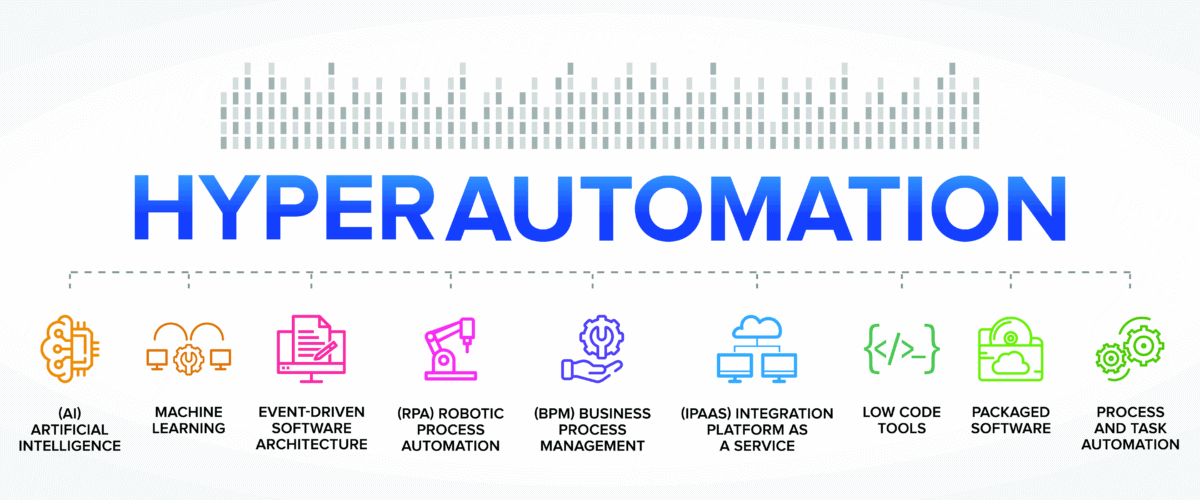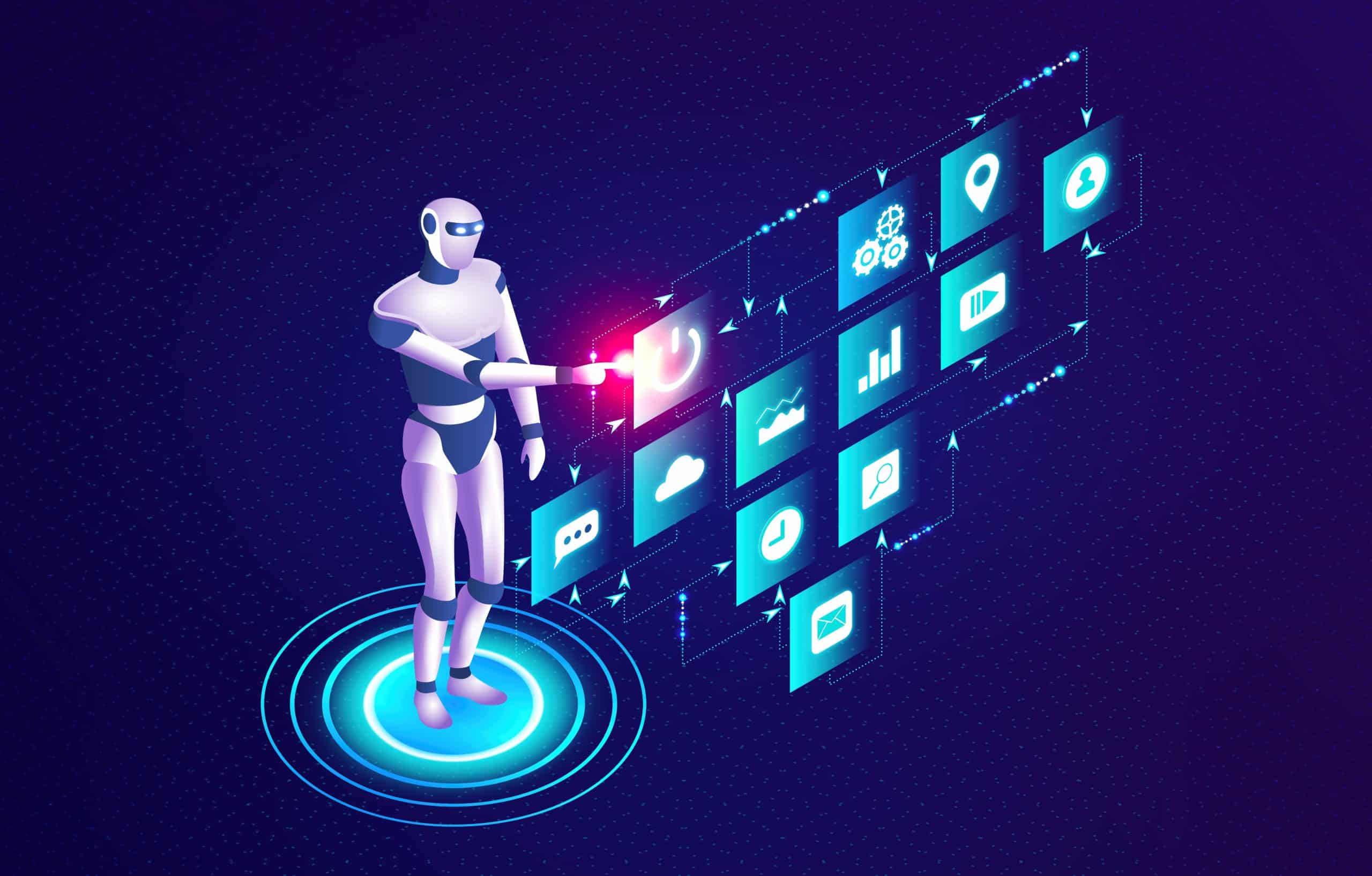The rapid advancement of technology has made it feasible to automate operational tasks along with decision-making. With the ultimate goal of automating all enterprises, hyper-automation is emerging as an ideal approach for making businesses more lucrative.
The primary goal of businesses is to maximize profits while minimizing costs. They set strategies to make their operations work faster while producing more money. Hyper-automation makes their operations considerably faster, better, and more profitable. It can automate operational knowledge and has the potential to involve everyone in an organization, which can influence the entire organizational culture.
As per the definition of Gartner, the technological research and consulting firm that first coined the term, hyper-automation is the union of Robotic Process Automation (RPA) and Artificial Intelligence (AI). Simply expressed, hyper-automation is the intelligent combination of automation systems that have intrinsic cognitive capacities and intelligence. Organizations that use hyper-automation operations strive to use AI, RPA, and Machine Learning along with other advanced technologies to run their operations without human involvement. Hyper-automation allows them to strategically automate business operations.
The Benefits of Hyper-Automation

Hyper automation provides a framework for automation, to scale up the success of RPA and enhance its weaknesses, ensuring all the automation tools and programs work together. It is an approach that enables organizations to rapidly identify and automate as many processes as possible using advanced technology. This allows businesses to make better and timelier decisions through the delivery of more precise and timely information.
In addition, the information gathered through hyper-automated business processes can be used to improve customer experience and supply chain management within business organizations. Apart from that, it increases employee engagement and collaboration by making sure that repetitive activities are handled by an efficient automated process.
Furthermore, all potential business operations may be automated rapidly and intelligently, allowing the construction of a digital clone of a company. As a result, faster and more accurate real-time data processing can be achieved with an improved and faster threat detection protocol.
How Does Hyper-Automation Work?

Hyper-automation is a sophisticated automation technology that makes use of a wide range of instruments. It establishes standards for each stage of RPA, including process discovery, optimization, design, planning, development, and monitoring. It employs several software tools to carry out each stage of the hyper-automation process.
- Data Mining Tools: programs that conduct data mining about the existing operational procedures, workflows, and environment. In addition, these tools search for previously unknown processes and process variations that might be candidates for automation. It looks for gaps, delays, and bottlenecks, and uncovers the potential for digital process automation that might be used to generate better efficiency.
- Task Collecting Tools: identify any inputs from the processes and tasks that are undertaken in order to find suitable RPA opportunities and develop the initial automation process.
- Process Modelling Tools: determine the optimal automation platform and automation technology using existing tools and algorithms. These tools constitute a process editor that enables us to define and optimize the procedures that will be automated. Additionally, they allow the creation of link processes to the gathered information.
- RPA tools: allow automation engineers to create and deploy bots.
- Analytics and Reporting Tools: calculate the efficiency and Return of Investment (ROI) of automated business processes.
Henceforward, Hyper-Automation…

Although hyper-automation appears to be a great deal for business enterprises, it is still in its relatively early stages. As a result, it is facing certain challenges. According to The AI Journal, there is still some misunderstanding between RPA and hyper-automation enabled processes. Besides, hyper-automation must be done strategically in order to deliver optimum benefit. To achieve true hyper-automation, firms must first prioritize their use of other technologies like RPA, AI, and Machine Learning. Organizations that successfully employ hyper-automation are totally committed to embracing emerging technology to revolutionize their businesses.
According to the reports of Gartner, the worldwide market for technology that enables hyper-automation will reach $596.6 billion in 2022. Gartner also predicted that through 2024, the drive towards hyper-automation will lead organizations to adopt at least three out of the 20 programs that enable hyper-automation. In addition, Gartner expects that by 2024, organizations will lower operational costs by 30 percent due to combining hyper-automation technologies with redesigned operational processes.
In the coming years, as emerging technologies keep advancing, more enterprises will incorporate hyper-automation into their operations. This would assist corporations to achieve their profit maximization targets. As appealing as it may sound for businesses, it may pose a danger to many job roles. Jobs with repetitive routines would be at risk. However, as technology replaces routine jobs, on one hand, a new dimension of opportunities emerges on the other.
Photo: ArtemisDiana/Shutterstock
You might also like:
Support us!
All your donations will be used to pay the magazine’s journalists and to support the ongoing costs of maintaining the site.
Share this post
Interested in co-operating with us?
We are open to co-operation from writers and businesses alike. You can reach us on our email at [email protected]/[email protected] and we will get back to you as quick as we can.









